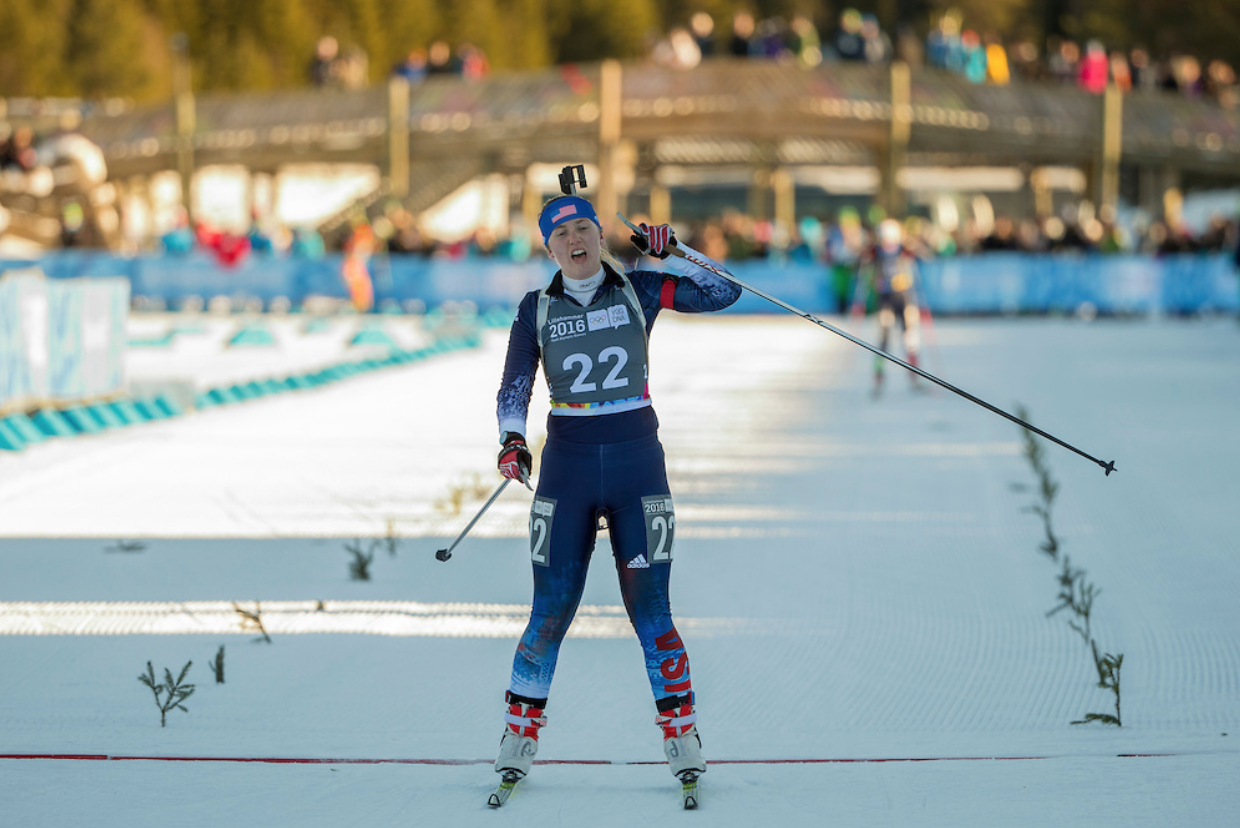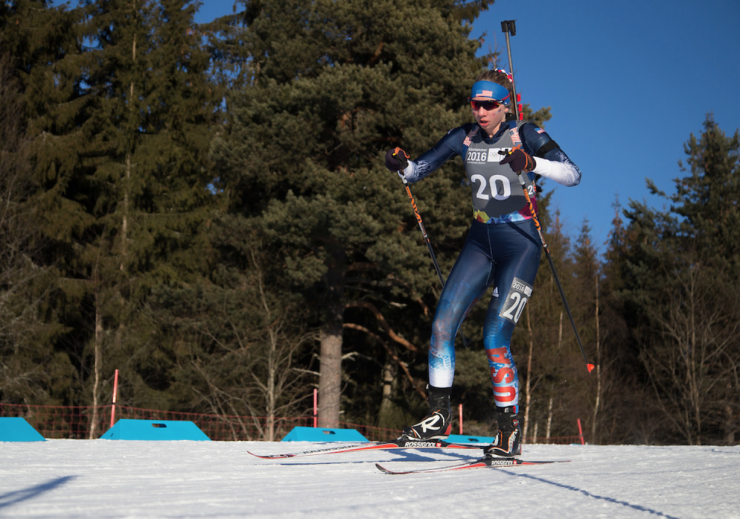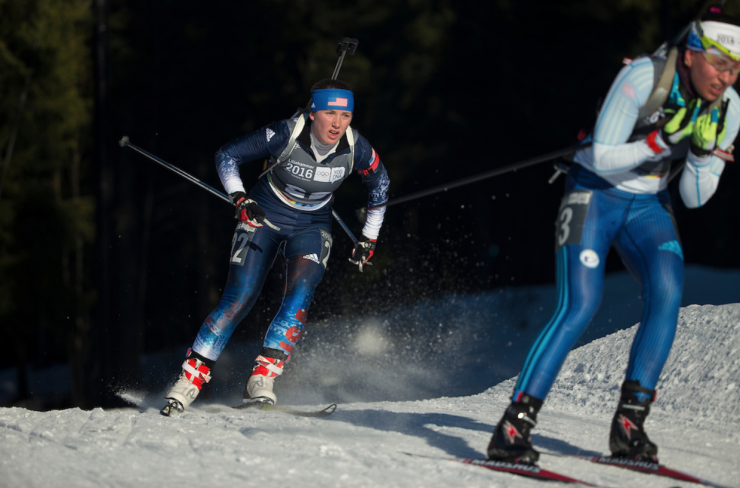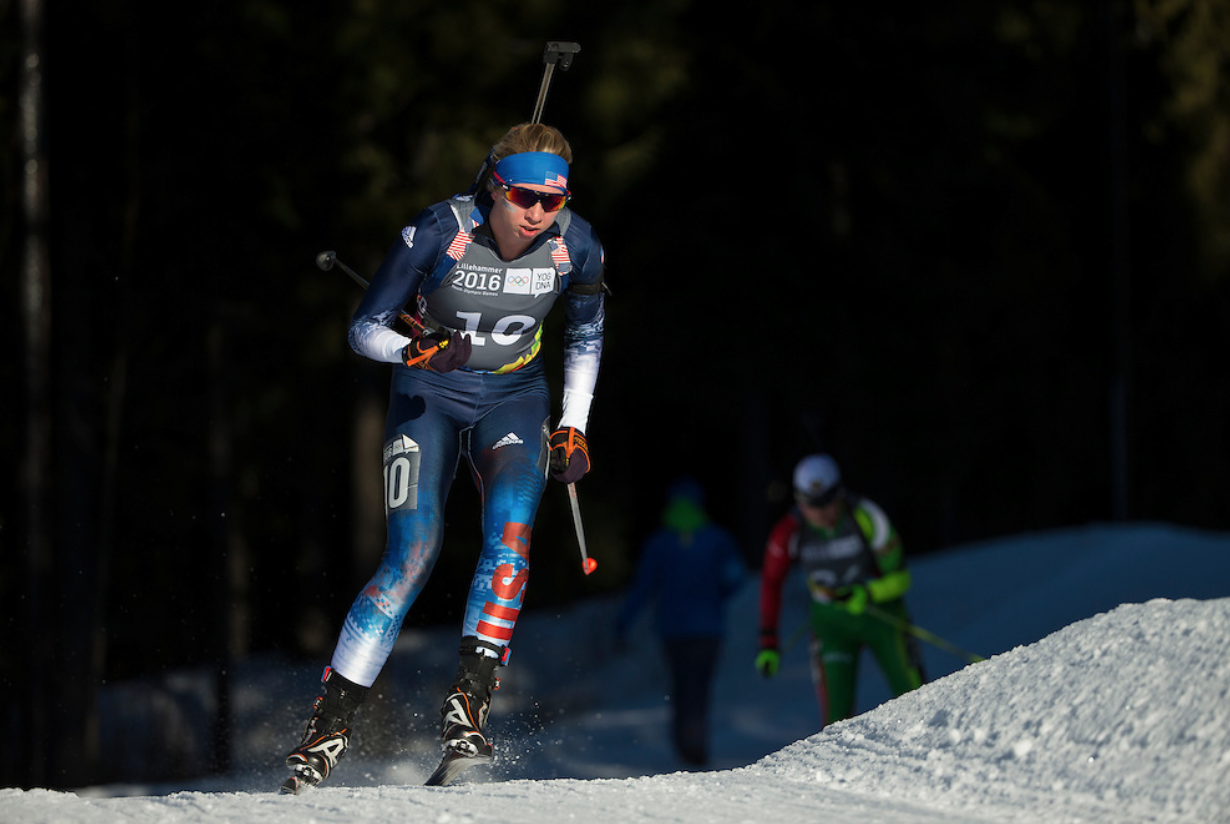
Note: This article has been updated to include comments from Amanda Kautzer about her 10th place in the sprint.
At last year’s World Youth and Junior Championships in Belarus, Vermont biathlete Chloe Levins made the most of her international debut, scoring a top-20 in just her second start in the youth field.
That success was parlayed into a National Development Group naming and Levins spent more time training this year with the national team coaches than she had before.
That should have set the 17-year-old up for success at this year’s World Youth and Junior Championships, held in late January in Romania.
But it didn’t.
“Illness caused me to miss an important training block the two weeks before WYJCH in Romania,” Levins wrote in an email. “Leading into the competitions, it was difficult for me to accept that I was not in my best shape before some of the biggest competitions of my life. My results were disappointing, but they were the best I could do at that point in time.”
She didn’t break the top 60 in either of her individual starts.

Luckily, Levins got a second crack at international competition this season when she was nominated to represent the United States at the Youth Olympic Games.
So along with Minnesotan Amanda Kautzer, Levins traveled to Antholz, Italy, for a training camp and to regroup. Then it was on to Lillehammer, Norway, for the Youth Olympic Games.
“The sprint and pursuit format was the same as [World Youth Championships], so I was excited for the chance to redeem myself in those races,” Levins wrote. “It didn’t matter who I was up against; I raced to prove to myself that I belong at this level of competition.”
In the opening competition, a 6-kilometer sprint on Sunday, Kautzer placed 10th, 58.9 seconds behind race winner Juliane Fruehwirt of Germany, and Levins finished 22nd, +1:33.1. Both had two penalties.
“Honestly my goal for the sprint was to have fun,” Kautzer wrote in an email. “I had no expectation of getting in the top 10 so was very surprised (and super excited) when I came through to start my final lap and my coach told me I was in 5th place (I started 20th, so towards the beginning of the race starts). It may seem silly, but I have always had my best races when I’m not result focused, rather taking it all in and enjoying the race – the speed of the downhills, the fans (especially my sister cheering SUPER loudly), the pressure of the range, and the feeling of pushing myself because I can, and want to.”
Levins described her race as “solid,” Levins wrote. “I shot decently and skied fine. Most of all, I was satisfied with how I improved upon my performance in Romania.”
Others tell another story.

“Chloe was disappointed about yesterday’s race,” U.S. Head Development Coach Jean Paquet said in a U.S. Biathlon press release on Monday after the subsequent pursuit. “Today she said she was mad and wanted to make it up. She was focused and had the determination on her face.”
Either way, Levins certainly improved in the 7.5 k pursuit on Monday. The only woman in the field to knock down all 20 targets, she moved from 22nd all the way up to fourth, 34.7 seconds behind Khrystyna Dmytrenko of Ukraine, who won the competition.
“The night before the race, our coaches were optimistic by saying ‘anything is possible in a pursuit competition’,” Levins wrote of her change in fortune. “This idea stayed with me. No one can predict what will occur in a biathlon race, which is part of the beauty of the sport.”
Fourth place is the top result by an American biathlete ever at the Youth Olympic Games.
The level of competition is not directly comparable to World Youth and Junior Championships. The age categories are different – Youth Olympic Games is an under-18 competition, while the youth age category at the biathlon championships is an under-19 category – and countries can only enter a maximum of two rather than four athletes per gender at the Youth Olympics.
But there were some familiar faces. Arina Pantova of Kazakhstan, on the podium in the sprint, won the World Youth Championships pursuit this season. Lou Jeanmonnot Laurent of France, third in the pursuit, finished no lower than seventh in any competition at World Youth Championships.
Monday was also a personal milestone for Levins: she had never before cleaned a four-stage race.

“The first step to cleaning a four-stage race is believing that you can clean a four-stage race,” she wrote. “Most of the time it doesn’t work out, but it worked for me for the first time during my pursuit race on Monday! During the race, I was less aware of my result and more aware of the process necessary to make good shots. On the last loop, it finally sunk in that I had shot clean. Really fast skis and great encouragement by my teammates and coaches on the course willed me to the finish line of my best race so far as a biathlete.”
Kautzer shot 50% over the first two prone stages, and although she was able to improve her shooting in standing for a total of eight penalties on the day, that dropped her to 27th, +4:04.2.
Levins races next on Wednesday, in the biathlon single mixed relay with Vaclav Cervenka (watch it at 5 a.m. Eastern time). Cervenka finished 36th in the men’s sprint and skied up to 20th in the pursuit just a single penalty; the pair may be a particularly strong-shooting team.
The other U.S. entrant in the men’s races, Eli Nielsen, finished 46th in the sprint and 45th in the pursuit.
All four will compete in the mixed relay on Sunday.
“Performing at my best level during a race like the pursuit gives me great confidence,” Levins wrote. “It is important to maintain confidence no matter what results one may encounter, so I plan to approach the next races no differently than I usually do.”
And in between races, the athletes are trying to enjoy the atmosphere of the Youth Olympic Games, which is in many ways quite different than a normal sport-specific junior world championships.
“The environment in the biathlon stadium never changes,” Levins wrote. “But because all winter Olympic sports compete at YOG, there are many more athletes (1100) and countries represented (70). The event organizers also made an huge effort to keep us busy off the course with numerous activities and events occurring in the athlete village!”
Chelsea Little
Chelsea Little is FasterSkier's Editor-At-Large. A former racer at Ford Sayre, Dartmouth College and the Craftsbury Green Racing Project, she is a PhD candidate in aquatic ecology in the @Altermatt_lab at Eawag, the Swiss Federal Institute of Aquatic Science and Technology in Zurich, Switzerland. You can follow her on twitter @ChelskiLittle.



